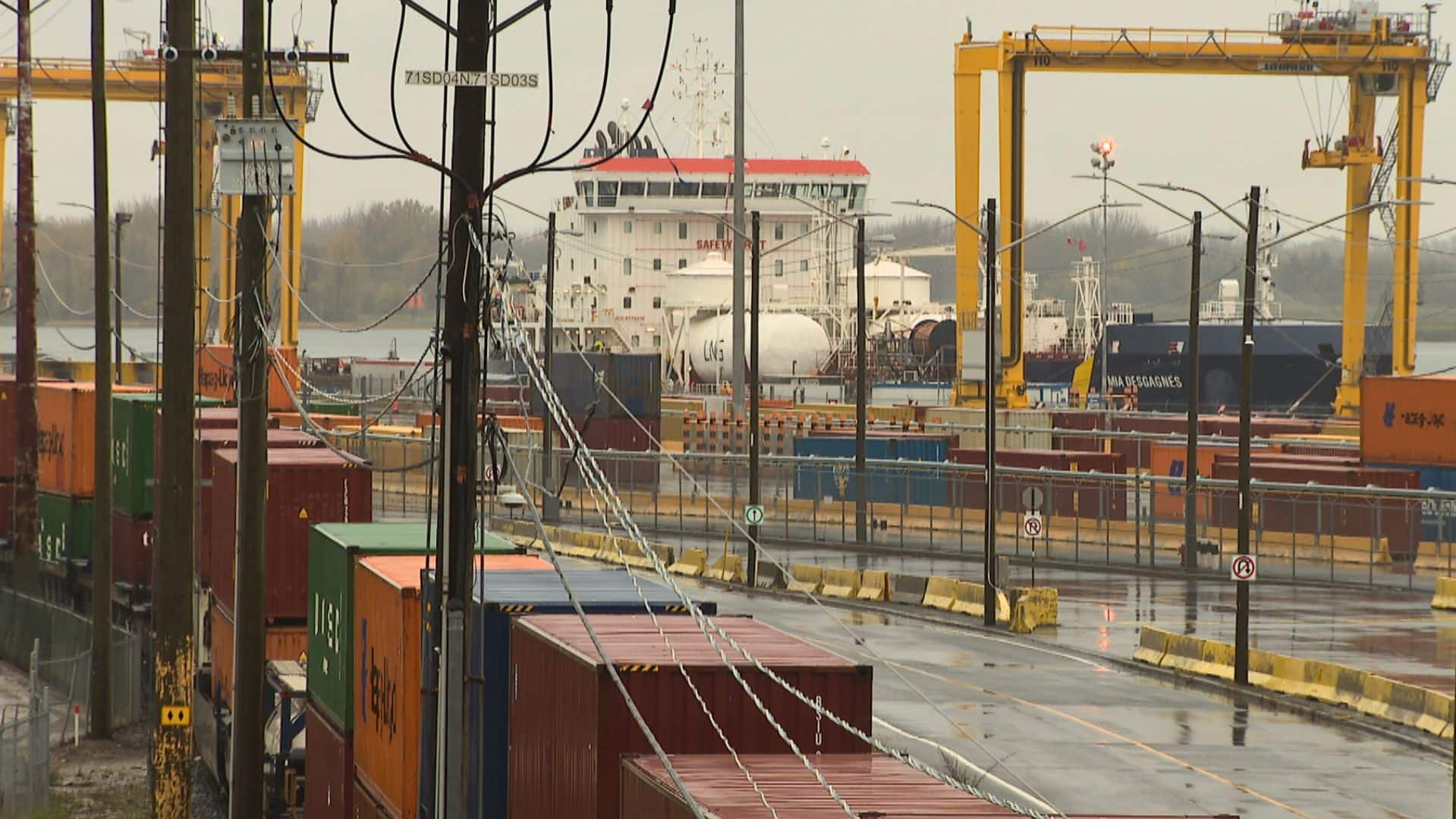Business
What to know about the St. Lawrence Seaway strike
The St. Lawrence Seaway has shut down after hundreds of workers walked off the job Sunday. Here are answers to a few key questions about what’s going on:
What is the St. Lawrence Seaway?
The St. Lawrence Seaway is a marine shipping route that links the Atlantic Ocean to the Great Lakes through a system of 15 locks between Lake Erie and Montreal.
The seaway is co-managed by the St. Lawrence Seaway Management Corp., a not-for-profit established by the Canadian government, and the Great Lakes St. Lawrence Seaway Development Corp., a U.S. federal agency.
When combined with the Soo Locks at Sault Ste. Marie, Ont. — managed separately by the U.S. Army Corps of Engineers — the transit system stretches about 3,700 kilometres from Lake Superior to the Atlantic.
What is the importance of the route?
The full Great Lakes St. Lawrence Seaway system, also known as Highway H2O, serves over 100 ports and commercial docks and helps Canada’s Prairie provinces and the U.S. Midwest export goods. Key cargo includes grain, iron ore, petroleum products, stone and coal.
A 2018 study by Martin Associates found that goods moving through the system supported more than 78,000 direct jobs and generated $35 billion in revenue in both Canada and the U.S.
Last year, the 300-kilometre St. Lawrence Seaway stretch carried more than 180 million tonnes of goods worth about $16.7 billion — nearly half of it grain and iron ore.
Why are workers striking?
The approximately 360 striking workers include Unifor members at Locals 4211, 4212 and 4323 in Ontario and Locals 4319 and 4320 in Quebec.
The union says its members are fighting for higher wages from the St. Lawrence Seaway Corp. to keep up with the rising cost of living.
Unifor Quebec director Daniel Cloutier said in a statement that the jobs involved require intense training, a high level of understanding of health and safety risk and carry enormous responsibility.
Featured VideoWorkers at the St. Lawrence Seaway went on strike over the weekend demanding higher wages and halting cargo traffic on the crucial supply route.
What has the St. Lawrence Seaway Management Corp. said?
The SLSMC says it is dedicated to finding a solution, but that union members are pushing for wage increases “inspired” by the negotiations in the auto industry, where Unifor has made substantial gains.
It says that unlike in the auto industry, seaway worker wage gains over the past 20 years have exceeded inflation and are still close to 10 per cent ahead. It says it’s working to reach an agreement that balances wage demands and market realities.
The company says it is also waiting for a response to its application under the Canada Labour Code for the union to provide employees during the strike to ensure grain shipments can continue.
The SLSMC says it carried out an orderly full shutdown of the system during the 72-hour notice period. It says no vessels are waiting to exit the system, but more than 100 are waiting outside of it held up by the strike.
What are business groups saying?
The Canadian Chamber of Commerce and the Canadian Federation of Independent Business have urged the federal government to intervene in the strike to avoid disruptions to supply chains.
The business groups say Canadians are already dealing with inflationary pressures that have been caused in part by supply chain issues.
The CFIB said it is very concerned about the strike, noting that small businesses were already hit by the strike at B.C. ports and supply chain disruptions in the summer.
The Canadian Chamber of Commerce says the Seaway supports more than 66,000 Canadian jobs and is responsible for $34 million in economic activity a day.

Business
All Magic Spells (TM) : Top Converting Magic Spell eCommerce Store


Product Name: All Magic Spells (TM) : Top Converting Magic Spell eCommerce Store
All orders are protected by SSL encryption – the highest industry standard for online security from trusted vendors.

All Magic Spells (TM) : Top Converting Magic Spell eCommerce Store is backed with a 60 Day No Questions Asked Money Back Guarantee. If within the first 60 days of receipt you are not satisfied with Wake Up Lean™, you can request a refund by sending an email to the address given inside the product and we will immediately refund your entire purchase price, with no questions asked.
Business
Turn Your Wife Into Your Personal Sex Kitten


Product Name: Turn Your Wife Into Your Personal Sex Kitten
All orders are protected by SSL encryption – the highest industry standard for online security from trusted vendors.

Turn Your Wife Into Your Personal Sex Kitten is backed with a 60 Day No Questions Asked Money Back Guarantee. If within the first 60 days of receipt you are not satisfied with Wake Up Lean™, you can request a refund by sending an email to the address given inside the product and we will immediately refund your entire purchase price, with no questions asked.
Business
CPC Practice Exam


Product Name: CPC Practice Exam
Click here to get CPC Practice Exam at discounted price while it’s still available…
All orders are protected by SSL encryption – the highest industry standard for online security from trusted vendors.

CPC Practice Exam is backed with a 60 Day No Questions Asked Money Back Guarantee. If within the first 60 days of receipt you are not satisfied with Wake Up Lean™, you can request a refund by sending an email to the address given inside the product and we will immediately refund your entire purchase price, with no questions asked.
-

 News20 hours ago
News20 hours agoDefying Convention to Deepen Connections: Booking.com’s 8 Travel Predictions for 2025
-

 News6 hours ago
News6 hours agoAfter hurricane, with no running water, residents organize to meet a basic need
-

 Sports7 hours ago
Sports7 hours agoIn The Rings: Curling Canada still looking for Canadian Curling Trials title sponsor
-

 Politics7 hours ago
Politics7 hours agoN.B. election debate: Tory leader forced to defend record on gender policy, housing
-

 News7 hours ago
News7 hours agoAlberta government shifts continuing care from Health to Seniors Ministry
-

 News7 hours ago
News7 hours agoBuhai, Green and Shin lead in South Korea after 8-under 64s in first round
-

 News7 hours ago
News7 hours agoManitoba government halts school building plan, says other methods will be found
-

 News7 hours ago
News7 hours ago‘Significant overreach’: Ontario municipalities slam province over bike lane rules

























